By: Daniel Calbimonte | Updated: 2023-12-21 | Comments (1) | Related: > SQL Server 2022
Problem
This year SQL Server is 30 years old! SQL Server has evolved during these years and this article covers some of those changes and versions over the years.
Solution
Everything started in 1993, 30 years ago! This first version was created in an agreement between Microsoft and Sybase. Even today, some stored procedures and system views are similar to Sybase.
SQL Server 4.2
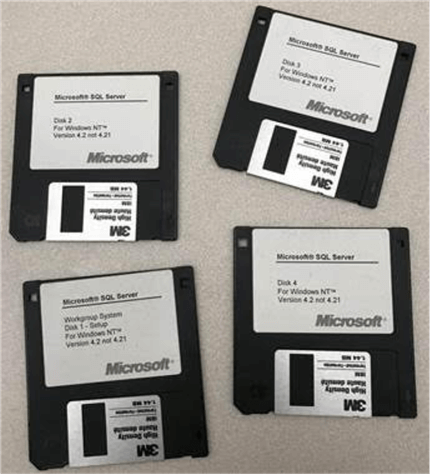
Release date: November 1993
This version was released for NT and previously, it worked on OS/2.
SQL Server 6.0
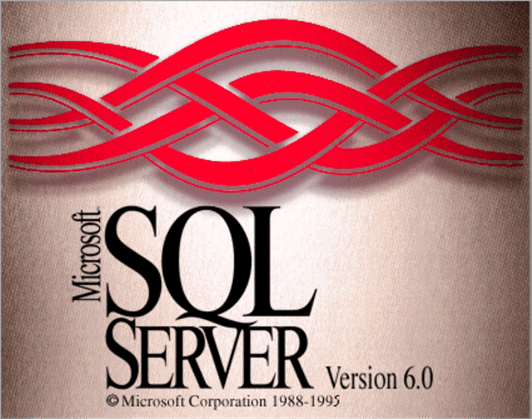
Release date: June 1995
This new version included several features:
- Support to deploy in a distributed environment
- Stored procedure support
- Trigger support
- Better performance and scalability
This version came in different editions.
- Standard edition: this edition was the basic option with core functionality.
- Professional edition: this edition had additional features such as OLAP cubes.
- Enterprise edition: this was the most advanced edition for large enterprises with large-scale database systems.
SQL Server 6.5
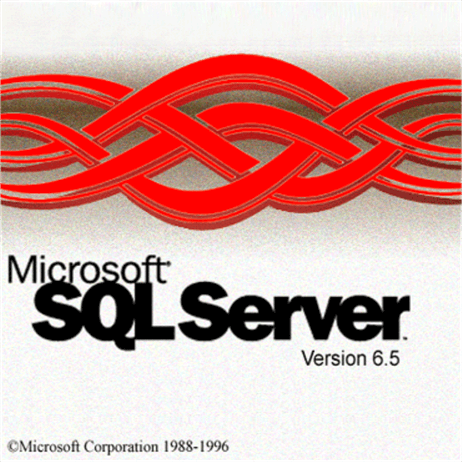
Release date: June 1996
The new features of SQL Server 6.5 were the following:
- Support for internet applications
- Distribution transactions improved
- Heterogeneous replication
SQL Server 7.0
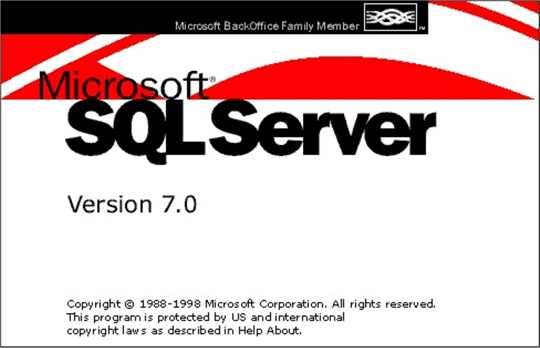
Release date: November 1998
This new version came with the following new features:
- It came with the OLAP Services (Online Analytical Processing)
- The code of this version was no longer based on Sybase code
- It included the Data Transformation Services (now SSIS)
- Incremental backups
Editions supported
- Desktop edition that supported Windows 95, 98. No transactional replication supported, no failover support, no full-text search. It supported a maximum of 2 CPUs, 2 GB RAM, 4 GB of space per database.
- Standard edition supported Windows NT and Windows 2000. A maximum of 4 CPUs and 2 GB of RAM. No failover support.
- Enterprise edition with support for NT and Windows 2000 Servers with a limit of 32+ CPUs and no restrictions.
SQL Server 2000
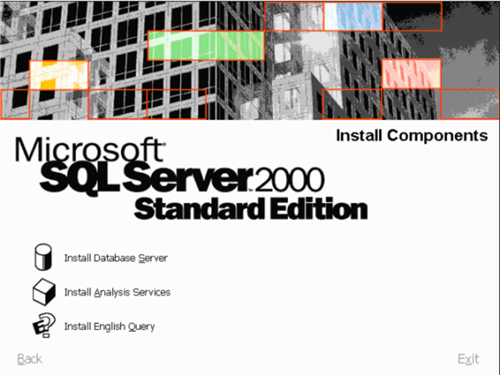
Release date: November 2000
This new version came with
- Database Tuning Advisor
- Partitioned views
- XML support
- Data mining
- SQL Server mobile
- Full text search
- English Query
- Analysis Services
Editions
- Enterprise edition - this was the most complete edition, created for large enterprises.
- Standard edition - this edition supported up to 4 CPUs and 2 GB of RAM.
- Personal edition - this edition was for personal use for desktop computers.
- Developer edition - this edition was similar to the Enterprise edition but was licensed for use only on development.
- Evaluation edition - this was a trial version of the Enterprise edition valid for 6 months.
SQL Server 2005
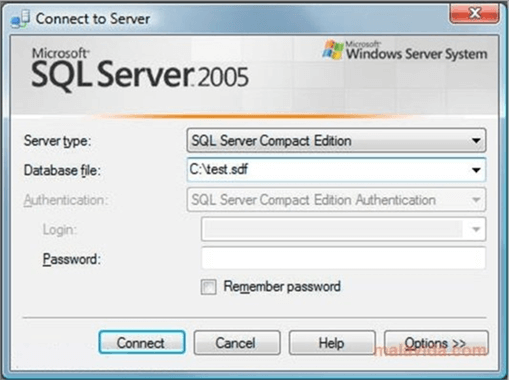
Release date: November 2005
This new version came with:
- SQL Server Management Studio (SSMS). At that time, SSMS was included in the installer.
- The AdventureWorks sample database. It came with the installer CD (yes, we had a CD to install it).
- CLR
- SSRS
- SSIS
- SSAS
- Management Views (DMV),
For more information about SQL Server, refer to this link: SQL Server 2005 New Features Interview Questions
Editions
- Enterprise edition was used for large enterprises that required higher availability and more advanced features. This edition had no hardware limits.
- Standard edition integrated 64-bit support, also offered unlimited RAM. The capacity was 3 CPUs.
- Workgroup edition was designed for SMEs businesses where no SSAS, SSIS or SSRS were required. It supported up to two processors with unlimited database size. The limit was 3 GB of RAM.
- Express edition was the equivalent of Desktop edition (MSDE). It had a limit of 4 GB databases.
- Developer edition was similar to the Enterprise edition, but for development and testing, not for production.
SQL Server 2008
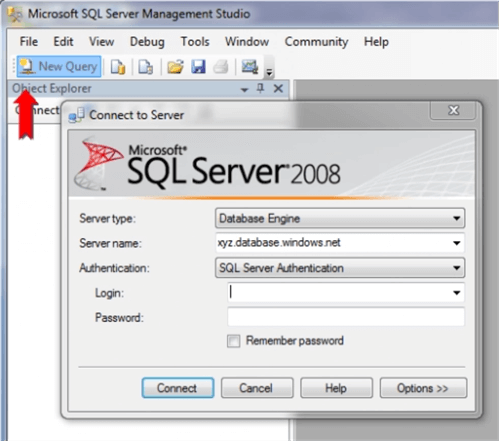
Release date: August 2008
This version came with
- Transparent Data Encryption
- SQL Server Audit
- Data compression
- PowerShell support
- For a list of changes, refer to the following link: SQL Server 2008 List of New Features
Editions
- Enterprise edition was for large enterprises with the highest availability and all advanced features included like the business intelligence. No limit on processors or RAM in this edition.
- Standard edition could use clustering, database mirroring, and supported 64-bit. The processor capacity was 4.
- Workgroup edition was designed for small and medium businesses where no BI or Reporting Services were required. This edition supported up to two processors, and unlimited database size.
- Express edition was similar to the Desktop edition (MSDE) in SQL Server 2000. It included the Import/Export Wizard and a series of other enhancements.
- Developer edition is like the Enterprise edition but was licensed for developers and testers, not for production.
SQL Server 2008 R2
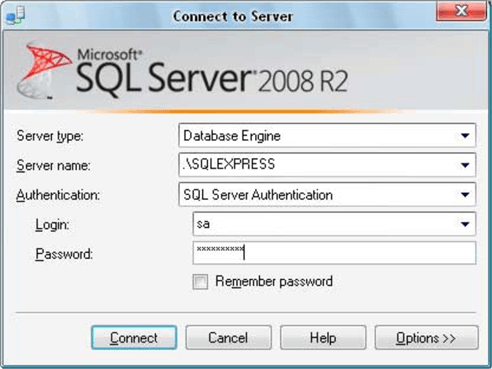
Release date: April 2010
This version introduced the following:
- Datacenter Edition
- Parallel Data Warehouse Edition
- Master Data Services
SQL Server 2012
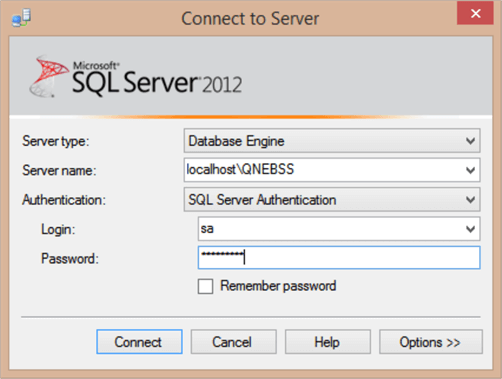
Release date: March 2012
This version came with the following features:
- Contained databases
- Columnstore indexes
- SQL Server Data Tools
- Always On
- DAX support
- Tabular model support
- Power View
- Master Data Services
Editions
- Enterprise edition supported up to 16-node AlwaysOn Failover Clusters, AlwaysOn Availability Groups, online operations, PowerPivot, Power View, Master Data Services, advanced auditing, transparent data encryption, and more.
- Standard edition supported clustering, database mirroring, and had 64-bit support. There was a cap of 4 processors. It provides the core relational database engine and basic business intelligence (BI) capabilities. It didn't have support for the advanced availability features or BI features such as PowerPivot, Power View, and Master Data Services.
- Workgroup edition was designed for small businesses and for use at the department level. It didn't support BI and high-availability capabilities. It supported up to two processors and a maximum of 2 GB of RAM.
- Express edition was a free and limited version of SQL Server. It had a limit of 4 GB databases. This was the most full-featured version of SQL Server 2012 Express. It included SSMS, SQL Server Data Tools (SSDT), full-text search, and the Reporting Services subsystem. SQL Server Express with Advanced Services was limited to 4 GB.
- Developer edition was similar to the Enterprise edition but licensed for development and testing, not for production.
SQL Server 2014
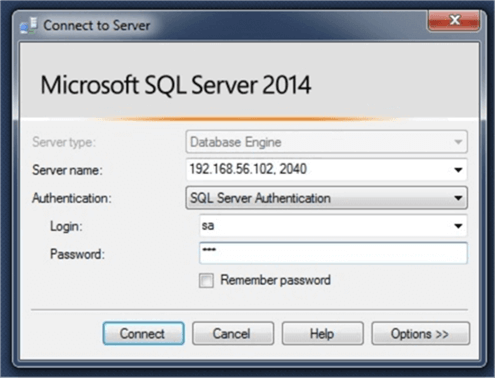
Release date: April 2014
The version 2014 includes the following new features:
- Support for In-Memory OLTP engine
- Deploy a SQL Server Database to a Windows Azure Virtual Machine
- AlwaysOn Improvements
- SQL Server Table and Index Operations
- Other features
Editions
- Enterprise edition has a maximum database size of 524 PB.
- Business Intelligence edition supported 128 GB of memory. It did not have advanced data integrity, high availability and in-memory OLTP features.
- Standard edition supported up to 16 processor cores and 128 GB of memory. The database supported 524 PB. It did not include the BI modules.
- Web edition was used for web hosting. It supported up to 16 processor and 64 GB of RAM. It didn't have buffer pool extension or SSAS.
- Developer and Express editions were similar to previous versions.
SQL Server 2016
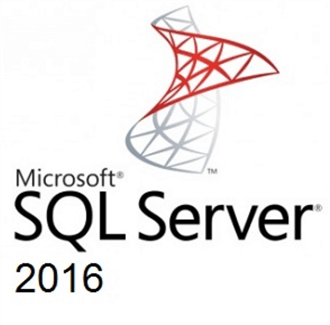
Release date: June 2016
The version 2016 included:
- A new Query Store to store query text and execution plans.
- It also included JSON support to import, export, and parse JSON.
- PolyBase was also included in this version.
- The Stretch Database was also incorporated.
- The In-memory OLTP supports different constraints like foreign keys, unique, and checks.
- In security, this version introduced Always Encrypted, Dynamic Data Masking, Row Level Security.
- In SSIS, Always On Availability Groups were included.
- Also, for SSIS, incremental package deployment.
- If we talk about SSAS, this version supports R Services and DBCC commands.
- New DAX functions were incorporated.
- The Master Data Services (MDS) included features like the support to many to many hierarchies and Domain-based attribute filtering.
- In addition, it included Entity Syncing and approval workflows using changesets. The business rules management was redesigned.
- In SSRS, a new web Portal was introduced and the support for a Mobile Report Publisher was included. The rendering engine supports HTML 5 in this version.
- Finally, the treemap chart type and the sunburst were included.
Editions
- Enterprise edition has a maximum capacity for buffer pool extension of 32.
- Standard edition supported up to 4 sockets or 24 cores of compute capacity and 128 GB of memory. The database supported 524 PB. It did not include the BI modules.
- Web edition was used for web hosting. It supported up to 16 processor and 64 GB of RAM.
- Developer and Express edition were similar to previous versions.
SQL Server 2017
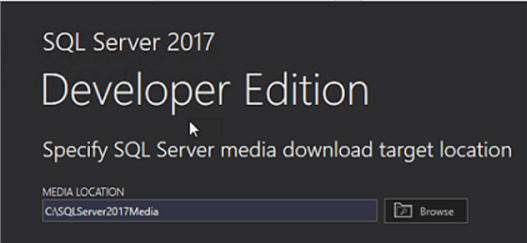
Release dates: October 2017
This new version came with:
- Linux support. In the past, Linux and Microsoft were enemies. Now, Microsoft loves Linux and helps and contributes to the Linux code.
- SQL Server 2017 came with trusted assemblies and Resumable online index rebuild features.
- Also, it includes the INDENTITY_CACHE option.
- In addition, it has new graph database capabilities to model many-to-many relationships.
- New dynamic management views were added to this version.
- In-Memory was improved.
- In SSIS they added the Scale Out Master feature and the failover handling.
- Linux was supported in SSIS.
- With OData it was possible to connect to Microsoft Dynamics CRM Online.
- Performance was improved in MDS.
- SSAS included object-level security.
- Date relationships a DAX editor in SSDT. Also, in SSRS we can add comments, use native DAX and support to OpenAPI.
- Finally, it incorporated Machine Learning Services.
Editions
- Enterprise edition has a maximum capacity for buffer pool extension of 32.
- Standard edition supported up to 4 sockets or 24 cores of compute capacity and 128 GB of memory.
- Web edition was used for web hosting. It supported up to 16 processor and 64 GB of RAM.
- Developer and Express edition were similar to previous versions.
SQL Server 2019

Release date: November 2019
SQL Server 2019 has these features:
- It can be installed in Windows, Linux, Docker, and also in Big Data analytics containers.
- This version works with Big Data, you can bring AI to analyze data. It is also possible to query non-relational data.
- It incorporates the data with Power BI, run real time Analytics.
- Also, it has Data Virtualization to integrate data from sources like Oracle, HDFS, Cosmos, etc. This version also included PMEM Devices, Columnstore Index Enhancements, etc.
Editions
- Enterprise edition has a maximum capacity for buffer pool extension of 128.
- Standard edition supported up to 4 sockets or 24 cores of compute capacity and 128 GB of memory.
- Web edition was used for web hosting. It supported up to 16 processor and 64 GB of RAM.
- Developer and Express edition were similar to previous versions.
SQL Server 2022
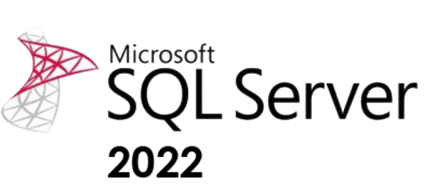
Release dates: November 2022
At the time this article was written, SQL Server 2022 was the latest version.
This new version includes:
- The Azure Synapse Link for SQL Server
- Object Storage Integration
- Link to Azure SQL Managed Instance
- Contained Availability Groups
- Distributed Availability Groups
- Integration with Microsoft Purview
- Azure Active Directory Authentication
- Always encrypted enhancements
- New Server Roles
- Dynamic Data Masking
- Improvements in Certificate and Keys Management
- Networking
- Ledger
Editions
- Enterprise edition has a maximum capacity for buffer pool extension of 128.
- Standard edition supported up to 4 sockets or 24 cores of compute capacity and 128 GB of memory.
- Web edition was used for web hosting. It supports up to 16 processor and 64 GB of RAM.
- Developer and Express edition were similar to previous versions.
SQL Server in Azure

Release date: 2010
We talked about the SQL Server on-premises. However, there is also Azure SQL in the cloud. This is a database provided by Microsoft in Azure, the Microsoft cloud. Also, we have Azure SQL Managed Instance. Azure SQL only provides databases. Azure SQL Managed Instance provides the entire SQL Server instance which includes server objects. Finally, we have Azure Synapse Analytics which is a cloud-based analytics service.
Summary
As you can see, SQL Server changed and improved a lot. It started as a database for Windows NT and now it can be installed in Windows, Linux, Docker and in the cloud. The evolution of SQL is amazing!
Resource and Image Sources
The resources for this article came from the following:
- https://f1-sqlserver.wixsite.com/f1-sqlserver/history
- https://archive.org/download/mssql65/mssql65.jpg
- https://www.sqltreeo.com/docs/sql-server-release-history
- https://twitter.com/bobwardms/status/806885734087098368
- https://virtuallyfun.com/2016/10/21/sql-server-6-5-windows-10-x64/
- https://en.wikipedia.org/wiki/History_of_Microsoft_SQL_Server
- https://www.reddit.com/r/linuxmemes/comments/mwa68u/microsoft_love_linux/
- https://www.linkedin.com/feed/update/urn:li:activity:7123669338124939264/
- https://www.malavida.com/es/soft/sql-server-2005-sp1/
- https://www.shoplack.com/upload/cover/20110910204132.gif
- https://1.bp.blogspot.com/-AaNbx1TIGso/WVx21OrJZrI/AAAAAAAABR0/iDh2-8XwInIf19sdVBu6OS5N7WtxQ26ywCLcBGAs/s1600/microsoft_sql-server.jpg
- https://sqlserverbuilds.blogspot.com/
Next Steps
For more information, refer to the following links:
- SQL Server Professional Development Certifications Tips
- SQL Server 2008 List of New Features
- What's New in SQL Server 2012 Reporting Services
- What's new in SQL Server 2014? Is it worth the upgrade?
- Reasons to Upgrade to SQL Server 2017
- Overview of SQL Server 2019 Features
- New and Enhanced Features in SQL Server 2022
About the author
 Daniel Calbimonte is a Microsoft SQL Server MVP, Microsoft Certified Trainer and 6-time Microsoft Certified IT Professional. Daniel started his career in 2001 and has worked with SQL Server 6.0 to 2022. Daniel is a DBA as well as specializes in Business Intelligence (SSIS, SSAS, SSRS) technologies.
Daniel Calbimonte is a Microsoft SQL Server MVP, Microsoft Certified Trainer and 6-time Microsoft Certified IT Professional. Daniel started his career in 2001 and has worked with SQL Server 6.0 to 2022. Daniel is a DBA as well as specializes in Business Intelligence (SSIS, SSAS, SSRS) technologies.This author pledges the content of this article is based on professional experience and not AI generated.
View all my tips
Article Last Updated: 2023-12-21






